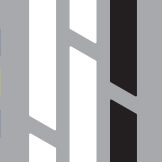FRPs are the product of advanced technology that provides solution and response to the highest tensile strength, even more than reinforcement by steel rebars or elements.
FRPs are composite materials with a high rigidity to weight ratio, and they are also highly resistance to heat.
Unlike most homogeneous materials, the qualities of composite materials can be designed and specified (according to the composition or type of the fiber, the resin and their ratio.
A well-known example of composite material is the fiberglass (based on glass fibers) which was used in Israel for the body of the Sussita car and is used today for the production of truck body parts and even boats.
Carbon sheets and boards are familiar to the public in sports equipment (rackets, mountain bikes, due to low weight) and aircraft parts.
The main benefits of using FRPs to reinforce buildings are:
- Lightweight.
- Short execution time and rapid work rate compared to other processes.
- Cost savings compared to steel reinforcement solutions.
- An effective solution for reinforcing concrete structures and bridges.
- Enables execution flexibility for reinforcement all parts of concrete structures — envelope and walls, beams, columns and ceilings.
- Does not significantly increase the area to be reinforced (does not require lowering the height of parking lot ceilings, for example).
Reinforcement of concrete structures is required and necessary in a variety of cases, as follows:
- Constructive cracks resulting from corrosion in marine or chemical atmospheres — up to significant erosion of the rebars’ diameter.
- For reinforcement of buildings and for protection against earthquake damage.
- For reinforcement of walls and ceilings due to cutting openings or beams.
- For adding loads to an existing building (adding floors).
- For reinforcement of Pal-Kal ceilings.
Applying FRPs is is a constructive process that requires knowledge, professional experience and proper certification by the material manufacturer or importer. Preparation of appropriate specifications will be done according to the properties of the concrete element to be reinforced and other environmental characteristics.

